Whether you’re out of a key ingredient or just looking to shake up your usual routine, a smart swap can completely transform the way you cook. These easy substitutions don’t just save time—they add new depth, balance, and flavor to your meals. From creamy stand-ins to bold flavor boosters, this list of thirty simple ingredient swaps will help you cook more creatively and confidently. Many of these alternatives are healthier, more accessible, or even more affordable than the originals. So whether you’re experimenting or improvising, these clever changes are here to elevate your everyday dishes with minimal effort.
1. Swap anise seeds for fennel seeds
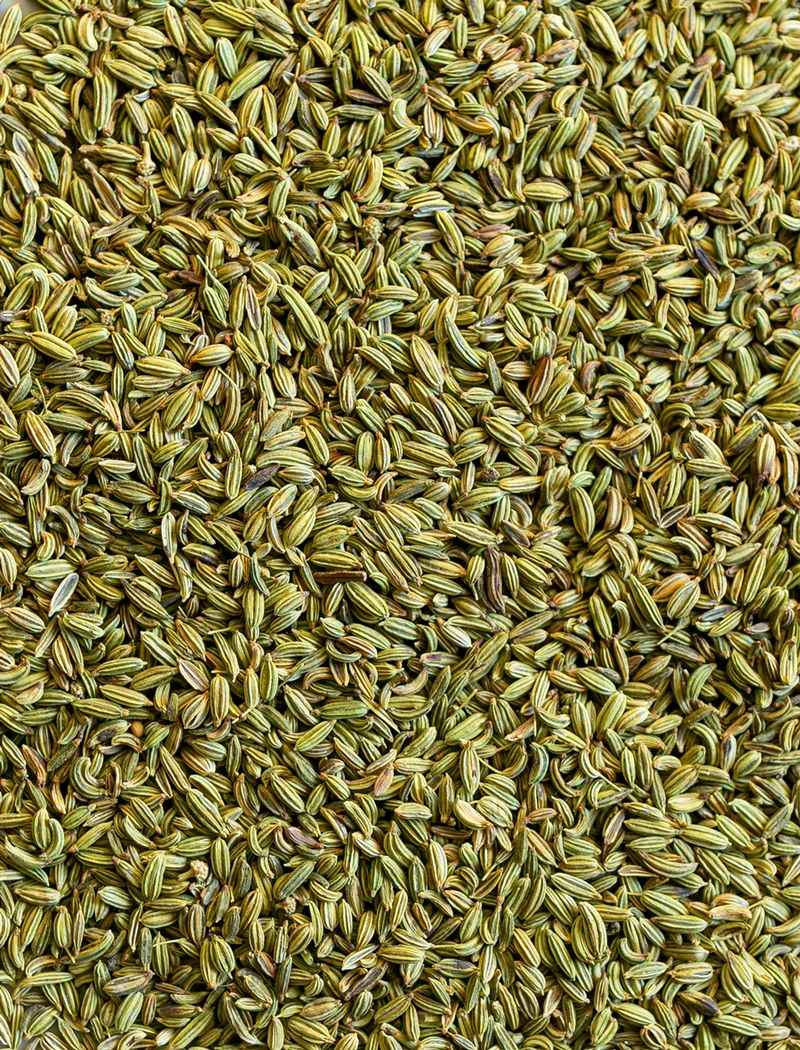
When you’re aiming for that subtle licorice-like note in a dish, fennel seeds make a fantastic alternative to anise seeds. While both share a similar flavor profile, fennel is a bit milder and more rounded, which can offer a smoother, more balanced taste.
It works beautifully in both savory and sweet recipes, from spiced breads to Italian sausages. Plus, fennel seeds are easier to find and more versatile in a wider range of cuisines. If you’re swapping anise in a spice blend, using fennel can soften the edges and create a gentler, more nuanced flavor without sacrificing depth.
2. Swap goats’ cheese for cream cheese

For those who prefer a milder, less tangy profile, cream cheese is a smooth and creamy stand-in for goat’s cheese. It brings the same rich texture to spreads, dips, and sauces but with a subtler flavor that can be more universally appealing. This swap works especially well in baked goods, cheesecakes, and frostings where goat’s cheese might be too assertive. Cream cheese also melts beautifully, making it perfect for pasta dishes or creamy fillings. It’s a simple change that softens the flavor while maintaining that luxurious, velvety mouthfeel that makes creamy dishes so irresistible.
3. Swap truffles for porcini mushrooms
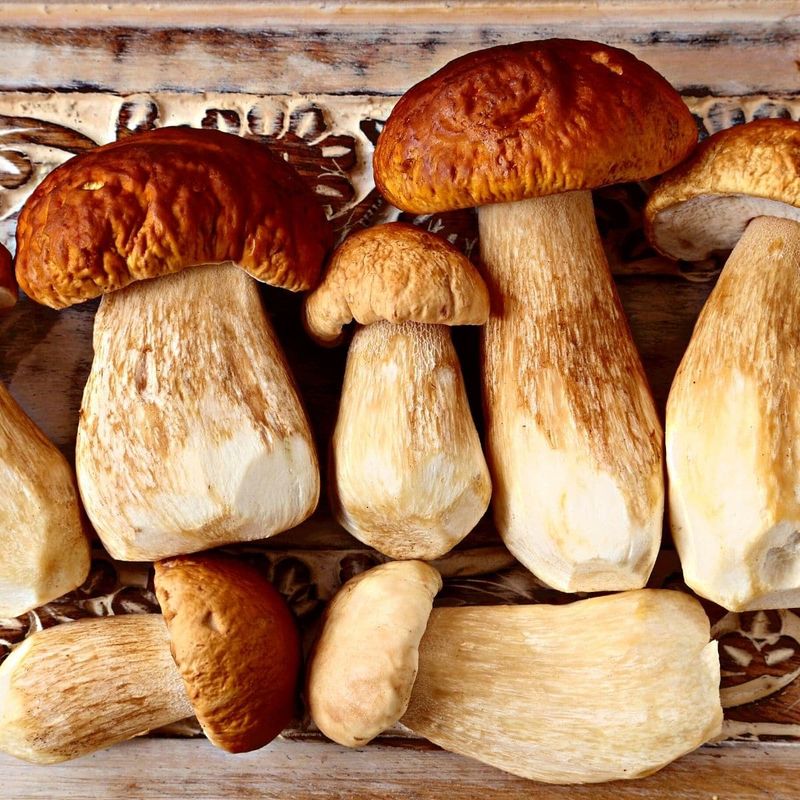
Truffles are prized for their earthy, intoxicating aroma—but they’re also expensive and hard to source. Enter porcini mushrooms: a deeply flavorful, umami-rich alternative that delivers plenty of complexity at a fraction of the cost. Whether dried or fresh, porcini mushrooms can be rehydrated and added to sauces, risottos, or pastas to mimic that luxurious depth truffles bring. They don’t have the same aroma, but their robust taste fills the gap beautifully. A little goes a long way, and they’re a smart choice when you want to elevate your dish without the gourmet price tag.
4. Swap buttercream for milk and lemon juice
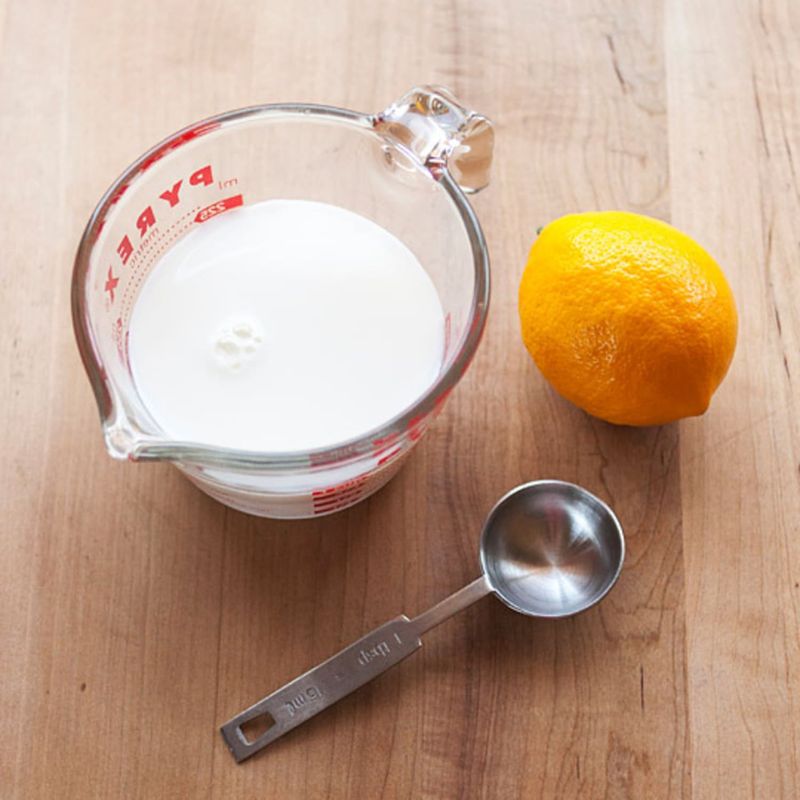
If you’re craving something light and tangy instead of rich and sugary, try swapping traditional buttercream with a mixture of milk and lemon juice. This combination creates a simple, zesty topping that cuts through sweetness and adds brightness to baked goods.
It’s especially refreshing on cakes, cupcakes, or quick breads where a buttery frosting might feel too heavy. This lighter option also highlights the flavor of the cake itself rather than overpowering it. It’s quick to make, naturally lower in fat, and adds a fresh twist that can surprise and delight your taste buds.
5. Swap sherry for apple cider or red wine vinegar

Sherry adds a warm, slightly sweet complexity to dishes, but when you’re out—or cooking alcohol-free—apple cider or red wine vinegar offers a bright, tangy alternative that keeps the flavor profile alive. Apple cider vinegar brings subtle fruitiness, while red wine vinegar has a deeper, more robust acidity. Both can deglaze pans, punch up sauces, and add dimension to soups or marinades. While they lack the caramel notes of sherry, a touch of sweetness (like a pinch of sugar or honey) can bridge the gap. This swap creates a bold, vibrant layer of flavor with ingredients you probably already have on hand.
6. Swap sour cream for Greek or natural yogurt
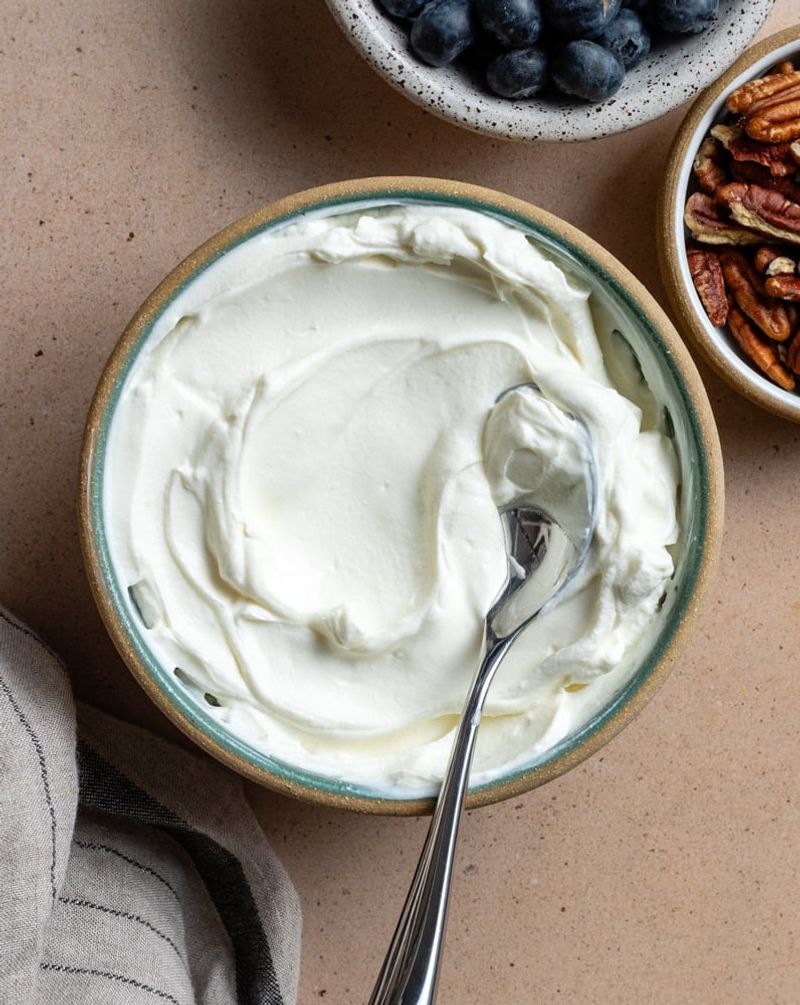
Looking to lighten things up without sacrificing creaminess? Greek or natural yogurt makes an excellent stand-in for sour cream. Both offer that familiar tang and thick texture but with the added benefit of probiotics and higher protein.
This swap shines in dips, baked potatoes, sauces, and even baked goods, where it adds moisture without the extra fat. Greek yogurt holds up particularly well in cooking, while natural yogurt is great for chilled dishes and dressings. It’s a quick, wholesome alternative that delivers the same richness and bite—perfect for adding a healthy twist to your favorite creamy recipes.
7. Swap cheese for nutritional yeast
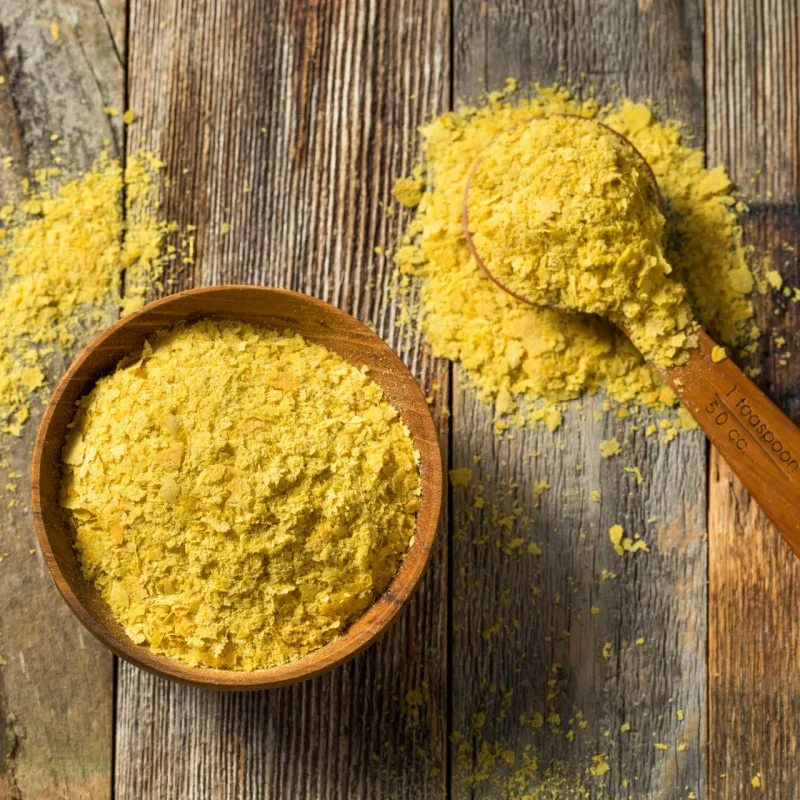
When you’re skipping dairy but still want that cheesy flavor, nutritional yeast steps in with savory brilliance. These golden flakes are packed with umami and deliver a nutty, cheesy taste that’s perfect for sprinkling over pasta, popcorn, or roasted veggies. Unlike regular cheese, nutritional yeast is shelf-stable, vegan, and loaded with B-vitamins. It melts differently but adds depth and complexity without the fat or lactose. Whether you’re vegan, dairy-free, or just experimenting, this swap lets you enjoy that “cheesy” satisfaction with a nutrient boost—and a whole lot of flavor—without reaching for the cheese grater.
8. Swap saffron for turmeric and paprika

Saffron is prized for its delicate floral notes and vibrant color—but it’s also one of the most expensive spices in the world. Turmeric and paprika offer a wallet-friendly way to mimic saffron’s rich golden hue and earthy undertones. While they don’t replicate the exact flavor, the combination brings warmth, color, and complexity to rice dishes, soups, and stews. Turmeric adds a subtle bitterness and healthful edge, while paprika offers smoky or sweet notes depending on the variety. Together, they’re a dynamic duo that adds depth and visual appeal—perfect when you want bold flavor without breaking the bank.
9. Swap iceberg lettuce for spinach
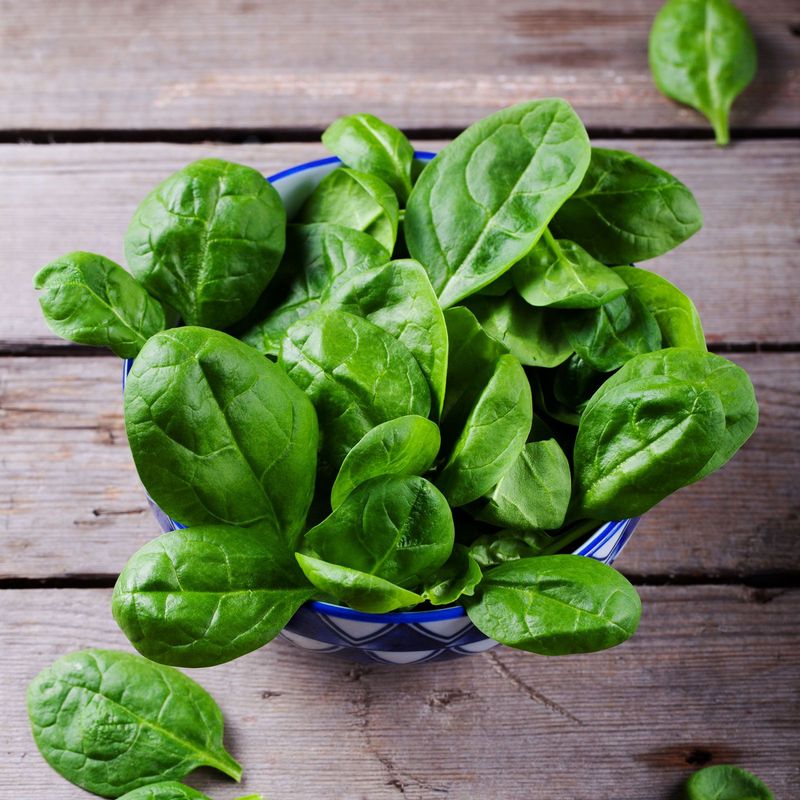
Crisp and refreshing as iceberg lettuce may be, spinach brings a whole lot more to the table—literally. This leafy green is loaded with nutrients like iron, magnesium, and fiber, making it a powerhouse upgrade for salads, wraps, and sandwiches.
Spinach offers a soft texture and a slightly earthy flavor that pairs beautifully with just about any dressing or topping. It also holds up better when cooked, allowing you to use it in warm dishes like stir-fries or sautés. Swapping iceberg for spinach instantly boosts the nutritional value of your meals without compromising on freshness or versatility.
10. Swap vanilla beans for pure vanilla extract
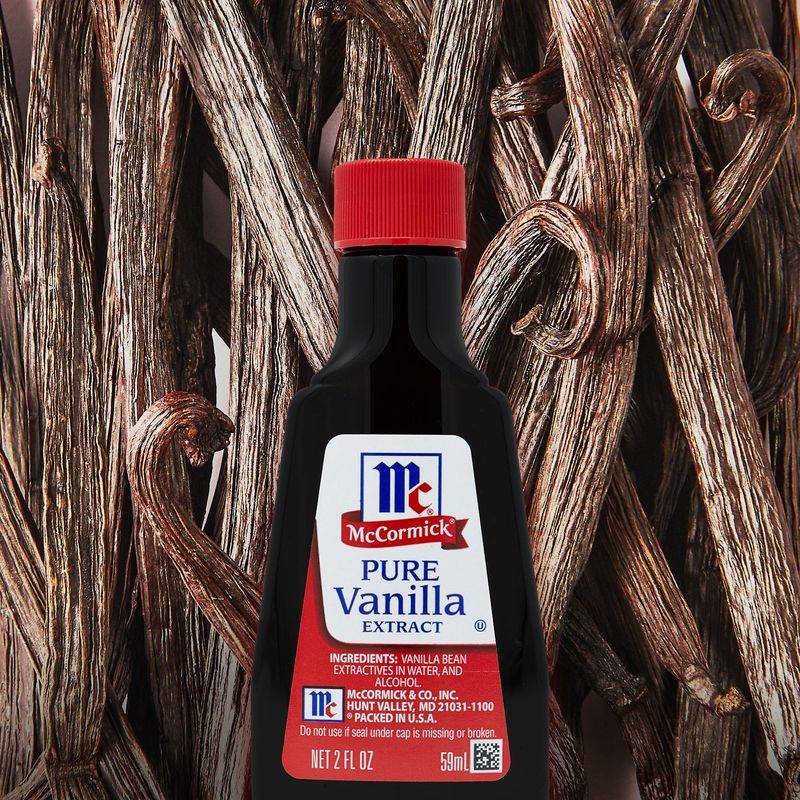
Vanilla beans may be the gold standard in baking, but pure vanilla extract is the everyday hero that gets the job done beautifully. It offers deep, aromatic sweetness and complexity—perfect for cookies, cakes, custards, and more. While vanilla beans bring those gorgeous flecks and a floral nuance, the extract provides similar warmth and flavor in a more convenient, affordable form. A teaspoon or two is usually all you need to elevate your desserts without the fuss of scraping seeds. For most home bakers, this swap delivers all the comfort and indulgence of vanilla in a fraction of the time.
11. Swap eggs for bananas and baking powder
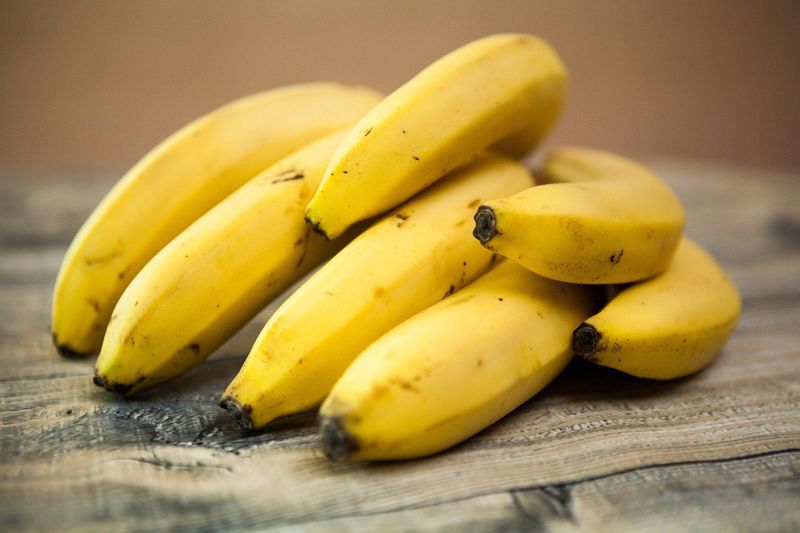
Baking without eggs? Mashed bananas and a pinch of baking powder can do the trick. This combo helps bind ingredients while adding natural sweetness and moisture—perfect for pancakes, muffins, or quick breads. One ripe banana replaces one egg, and a bit of baking powder ensures the right lift. It’s a great option for vegan baking or anyone avoiding eggs due to allergies. While the banana flavor comes through, it often complements the dish beautifully. This swap not only cuts out cholesterol but also adds a little fruit-based flair, transforming simple baked goods into something a bit more special.
12. Swap eggs for mayo
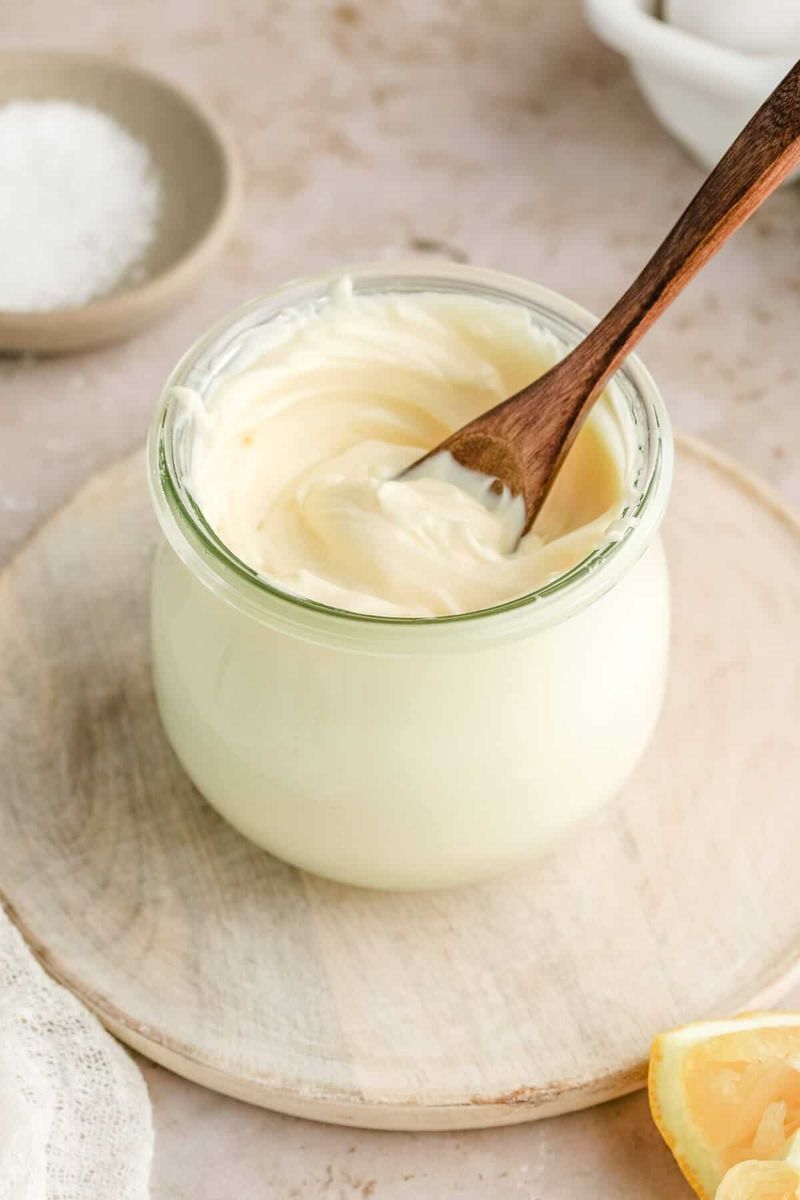
It might sound unexpected, but mayonnaise makes an excellent egg substitute in many baked goods. Made from eggs and oil, mayo helps retain moisture and structure—especially in cakes, brownies, and muffins. It’s particularly helpful when you’re short on fresh eggs or just want a softer, richer texture.
Use about three tablespoons of mayo to replace one egg, and be sure to choose a plain variety. While it won’t work in every situation (like scrambled eggs), it excels in baked treats, adding tenderness and a surprising creaminess that enhances the finished product without altering the flavor.
13. Swap cinnamon for nutmeg
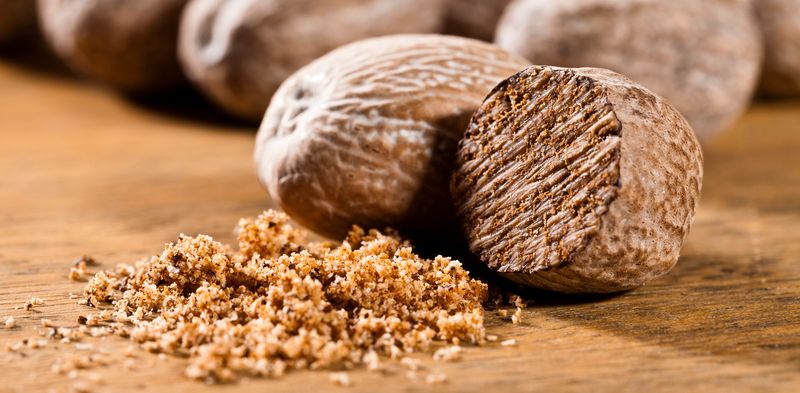
If you’ve run out of cinnamon mid-recipe, nutmeg can step in with warm, aromatic depth. While the two spices are distinct, they share similar cozy notes that work well in baked goods, oatmeal, lattes, and savory dishes like roasted vegetables or stews.
Nutmeg is a bit more pungent and complex, so you’ll want to use it sparingly—a little goes a long way. Grated fresh or used ground, it brings a touch of spice that evokes holiday warmth and comfort. This simple swap can add a more nuanced twist to dishes that usually lean on cinnamon alone.
14. Swap bourbon or rum for vanilla extract

If a recipe calls for a splash of bourbon or rum, vanilla extract can offer a similarly rich, rounded flavor—without the booze. It adds warmth and sweetness that mimics the depth of these spirits, especially in baked goods, glazes, or frostings.
While it won’t bring the exact caramel notes of aged liquor, vanilla extract still complements chocolate, nuts, and spices beautifully. It’s also ideal for anyone avoiding alcohol but still looking to layer in that mellow, indulgent flavor. Just a teaspoon or two can create complexity and comfort with ease, making this a smart swap for both taste and convenience.
15. Swap white wine for chicken stock and apple cider vinegar
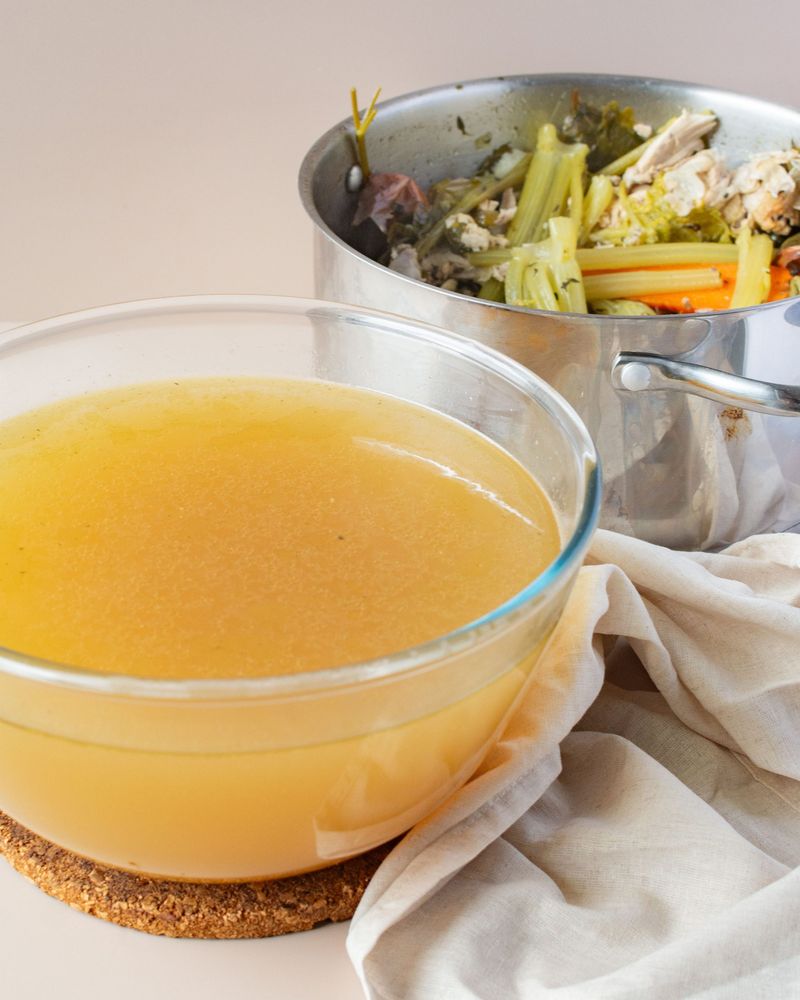
Out of white wine while cooking? Reach for chicken stock or apple cider vinegar. These two pantry staples can add acidity, depth, and brightness without the alcohol. Chicken stock brings savory richness, while a splash of apple cider vinegar provides the tangy lift wine typically delivers. Use them together for balance—stock for body, vinegar for zip. This duo works well in risottos, pan sauces, or braises where white wine would usually be called for. It’s an easy way to maintain flavor integrity and bring complexity to your dish when the wine rack is running low.
16. Swap double cream for milk and butter

No double cream? No problem. A quick blend of milk and butter mimics its richness beautifully. This combo replicates the high fat content needed for sauces, soups, and desserts, giving you that same silky texture without a special trip to the store. Simply mix three parts milk with one part melted butter to create an easy stand-in that works well in most recipes. While it won’t whip like double cream, it’s a great option for cooking and baking. The result is a creamy, comforting base that adds body and depth to dishes, all with ingredients you likely have on hand.
17. Swap capers for pickles

Capers bring salty, tangy bursts to recipes—but if you’re out, chopped pickles can fill in surprisingly well. Dill pickles, in particular, offer a similar briny bite that works in sauces, salads, and seafood dishes.
The texture is a bit crunchier, and the flavor slightly less floral, but they add that same sharp contrast that capers are known for. Use sparingly, finely chopped, and you’ll capture the zesty brightness that lifts and balances rich or fatty components. It’s a clever swap that adds dimension and a hint of sharpness with an ingredient you probably already have in your fridge.
18. Swap Worcestershire sauce for soy sauce
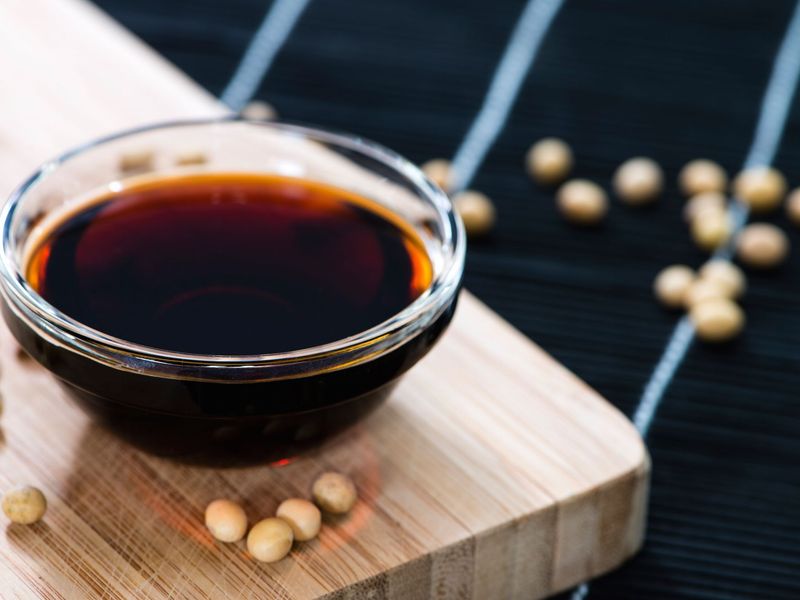
When Worcestershire sauce isn’t available, soy sauce can easily take over the role of salty, umami-rich enhancer. Both bring depth and complexity to marinades, stews, and sauces, though soy sauce leans a bit more savory. Add a dash of vinegar or lemon juice for acidity and a pinch of sugar or molasses to replicate Worcestershire’s signature sweet-tangy balance. The result is a bold, flavor-boosting liquid that works seamlessly in burgers, stir-fries, or gravy. This swap is especially handy when you’re keeping things vegetarian or don’t have the more elaborate mix of anchovies and spices that traditional Worcestershire requires.
19. Swap breadcrumbs for crushed crackers or cornflakes
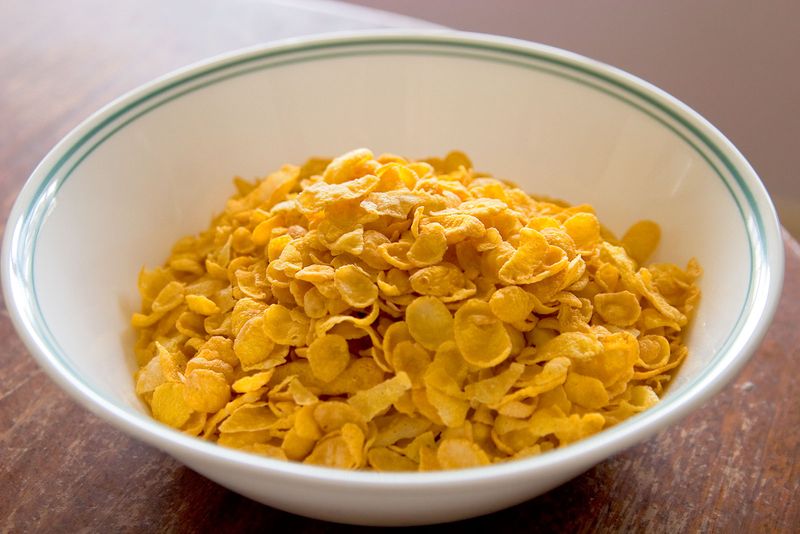
If you’re out of breadcrumbs, crushed crackers or cornflakes make a crispy, flavorful substitute. Crackers add a buttery, seasoned crunch—great for meatballs, coatings, or casseroles. Cornflakes bring light, golden crispness that shines in breaded cutlets or baked toppings. Just crush them to the desired texture and mix them in as you would traditional breadcrumbs. You might even find the results more flavorful and dynamic. This swap also lets you control salt and seasoning more easily, making it perfect for customizing crusts or filler with a little extra personality and crunch.
20. Swap mirin for rice vinegar

Mirin lends sweet acidity to Asian-inspired dishes, but rice vinegar makes an excellent replacement when balanced with a bit of sugar or honey. Just mix one tablespoon of rice vinegar with half a teaspoon of sugar to approximate mirin’s gentle, slightly syrupy taste.
This substitution works wonderfully in stir-fries, glazes, dressings, and marinades. While it’s not quite as rich, rice vinegar brings brightness and tang that mirrors mirin’s core role—enhancing flavor with subtle sweetness. It’s a great swap for everyday cooking that keeps your sauces lively and balanced without compromising the character of the dish.
21. Swap peanut butter for tahini
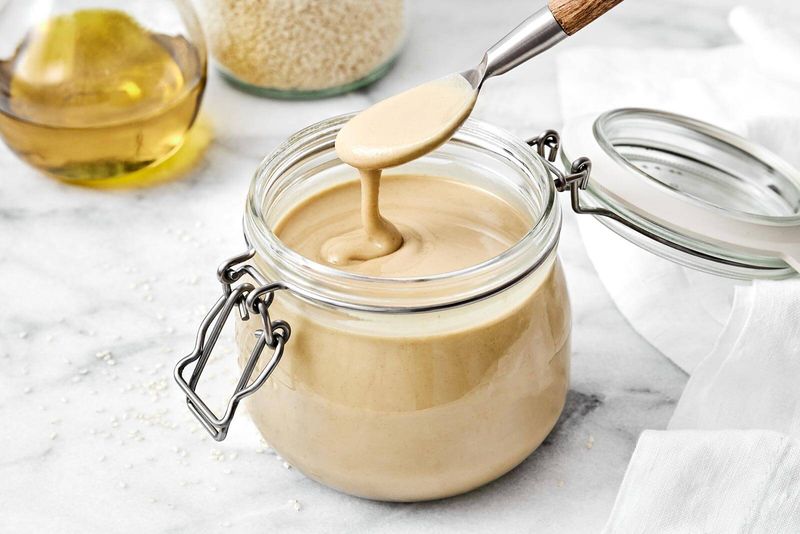
For a nut-free twist or a change in flavor, tahini makes a smooth and satisfying substitute for peanut butter. Made from ground sesame seeds, tahini has a creamy consistency and a slightly bitter, nutty taste that works well in both sweet and savory recipes. Use it in sauces, dressings, smoothies, or even baked goods for a more earthy flavor profile. It’s naturally plant-based, rich in healthy fats, and packed with minerals like calcium and magnesium. This swap adds Mediterranean flair and a silky texture that can transform everything from hummus to cookies into something uniquely delicious.
22. Swap mayonnaise for avocado or hummus
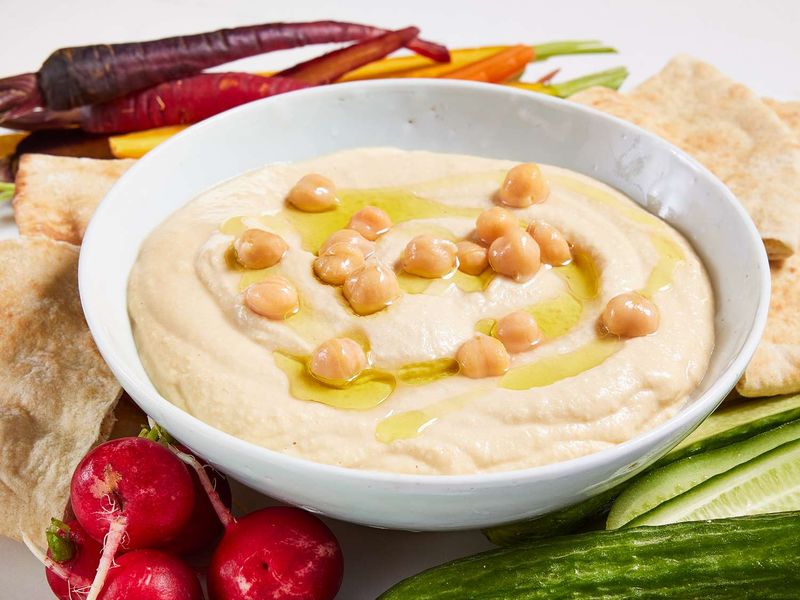
Ditch the mayo and reach for avocado or hummus when you want a creamy, flavorful alternative with a nutritional boost. Avocado offers a buttery richness and heart-healthy fats, while hummus adds savory depth with a protein and fiber kick. Both work beautifully in sandwiches, wraps, or as a base for spreads and dips. They’re especially great if you’re avoiding eggs or dairy, and they introduce a fresh, vibrant twist to everyday meals. This swap doesn’t just lighten things up—it adds extra flavor and texture, making even simple dishes feel more dynamic and satisfying.
23. Swap tomato sauce for tomato paste
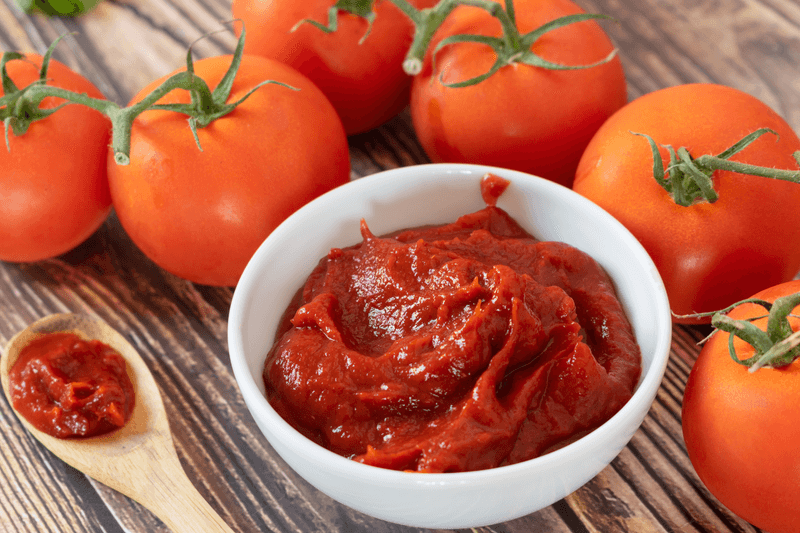
Tomato paste is a concentrated, flavor-packed alternative to standard tomato sauce, perfect when you want to add richness without the extra liquid. Just dilute with a bit of water and season to taste for a quick and customizable sauce. It delivers deep umami and a slightly caramelized tomato flavor that can make your dishes taste like they simmered for hours. Ideal for pasta, stews, or casseroles, this swap gives you more control over texture and intensity. Keep a can or tube on hand—it’s a pantry essential that transforms the ordinary into something bold and satisfying.
24. Swap lemon juice for vinegar

Out of fresh lemons? A splash of vinegar can step in to provide that needed acidity and brightness. White wine vinegar, apple cider vinegar, or even rice vinegar can mimic lemon juice’s tartness in dressings, marinades, and sauces.
While vinegar lacks the citrus aroma, it still lifts and balances flavors with sharp clarity. Add it gradually and taste as you go—it’s more potent by volume. This swap is especially handy in savory recipes, where a little tang brings everything together. It’s a quick, accessible fix that preserves the zest and balance your dish was counting on.
25. Swap sugar for mashed ripe bananas in baking
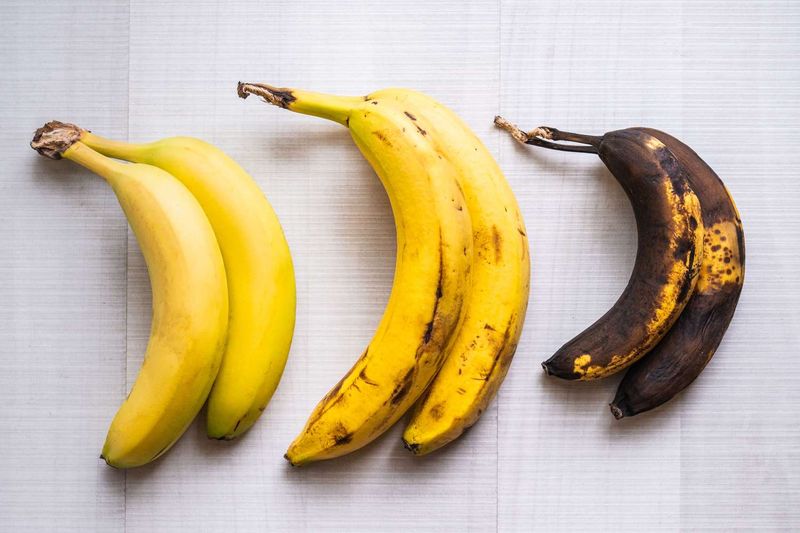
For a naturally sweet, wholesome swap, mashed ripe bananas are a go-to substitute for refined sugar in baked goods. They add moisture, flavor, and subtle fruitiness to muffins, pancakes, and quick breads while cutting down on added sugars. Bananas also provide fiber, potassium, and antioxidants—turning your treat into a more nutrient-rich bite. Use about ½ cup of mashed banana to replace 1 cup of sugar, and reduce other liquids slightly if needed. While it won’t work in every recipe, this swap shines in soft, moist bakes that benefit from a little extra richness and natural sweetness.
26. Swap heavy cream for coconut cream in desserts or sauces
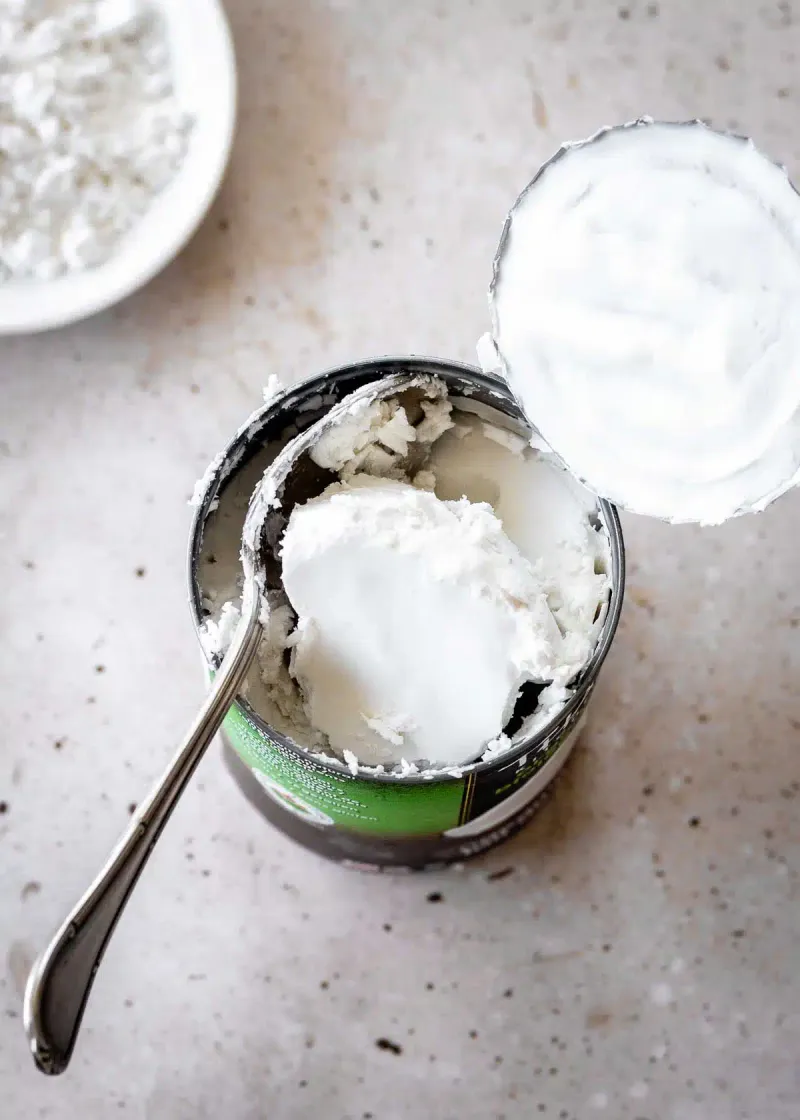
Craving creamy richness without the dairy? Coconut cream is a luscious, plant-based substitute for heavy cream in both sweet and savory dishes. It brings a silky texture and subtle tropical flavor that works beautifully in curries, soups, or whipped into dreamy desserts.
Just scoop the thick part from a can of full-fat coconut milk for best results. While it’s not a perfect match in every recipe, it adds character and a lovely richness that elevates many dishes. Plus, it’s a favorite for vegan and dairy-free cooking, offering indulgence without compromise or complicated substitutions.
27. Swap honey for maple syrup or agave nectar

When you’re out of honey or looking for a vegan-friendly alternative, maple syrup or agave nectar offers smooth, sweet solutions. Maple syrup brings warm, caramel-like notes and works wonderfully in baked goods, glazes, or even drinks. Agave nectar is milder, with a thinner texture and a neutral flavor that blends seamlessly into recipes. Both are liquid sweeteners, making them easy one-to-one substitutes in most cases. This swap not only keeps your recipe on track but can also offer different flavor nuances, adding dimension to dishes where honey might otherwise dominate. Choose based on taste and let your creativity guide you.
28. Swap whipping cream for chilled coconut milk (top thick part only)
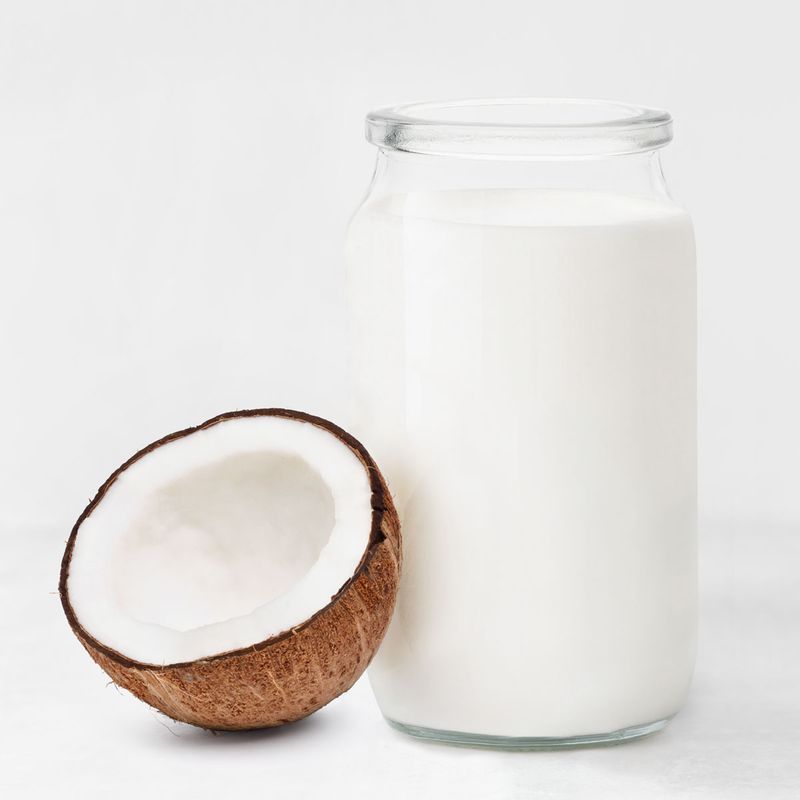
Need whipped cream but don’t have dairy on hand? Chilled full-fat coconut milk saves the day. Once refrigerated, the thick cream rises to the top—perfect for whipping into a soft, fluffy topping. It adds a light coconut aroma and works well on fruit, pies, or hot drinks.
Sweeten and flavor it as desired for a personalized twist. This is a fantastic swap for vegan desserts or anyone seeking a non-dairy alternative that doesn’t skimp on texture. Just be sure to use coconut milk, not coconut beverage, for best results. It’s creamy, dreamy, and surprisingly easy to whip up.
29. Swap béchamel sauce with cauliflower purée for a lighter option
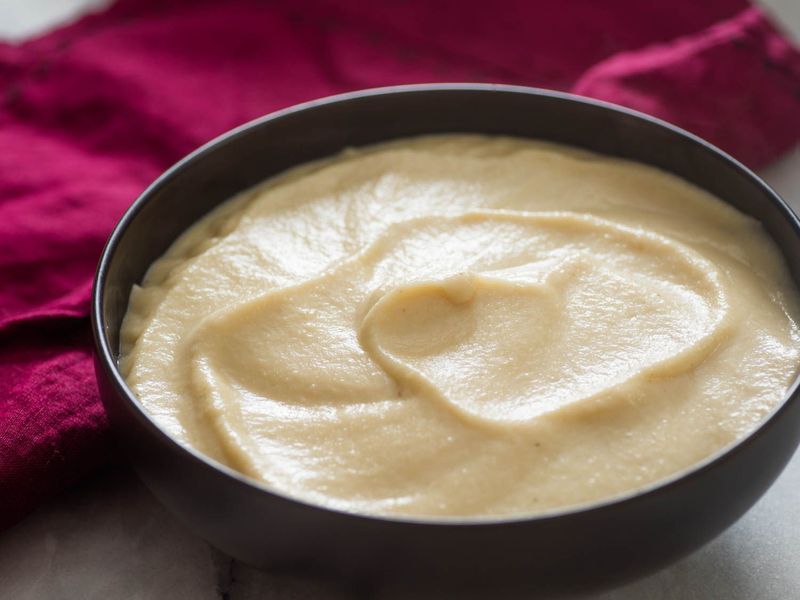
Béchamel is a classic, creamy base—but if you’re after something lighter and more veggie-forward, cauliflower purée is a brilliant substitute. Simply steam or boil cauliflower, blend until smooth, and season to taste. The result is a silky, neutral-flavored base that mimics béchamel’s texture without the flour, butter, or dairy. It works well in lasagna, mac and cheese, and gratins, offering creaminess and body while slashing calories and carbs. It’s also a sneaky way to add more vegetables to your meal without changing the overall flavor too much. This swap proves that lighter doesn’t have to mean less satisfying.
30. Swap sugar for dates or date syrup
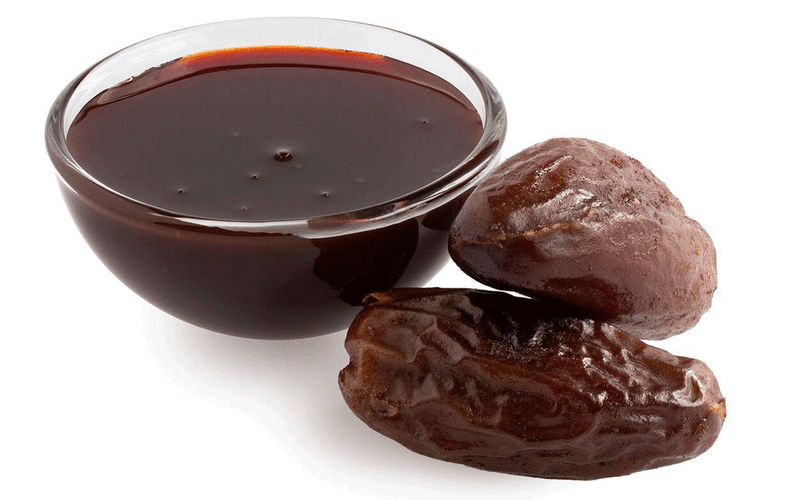
Dates bring natural sweetness, fiber, and rich caramel-like flavor to your favorite recipes, making them a nutrient-packed alternative to refined sugar. Blend pitted dates into smoothies, batters, or energy bites, or use date syrup as a liquid sweetener in sauces and baking.
While not neutral in taste, their deep, complex sweetness adds warmth and richness to baked goods, breakfast bowls, and dressings. They also offer vitamins and minerals like potassium and magnesium, turning treats into something a bit more nourishing. For a whole-food, plant-based upgrade, dates are a delicious way to sweeten smarter without missing a beat.
Leave a comment